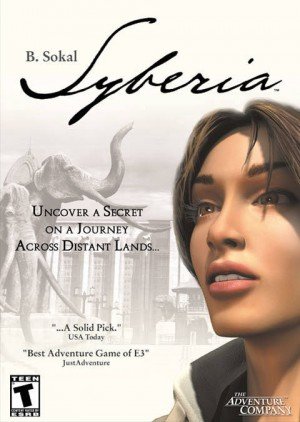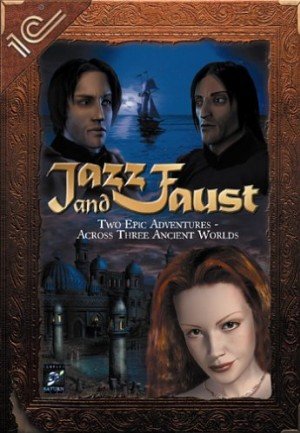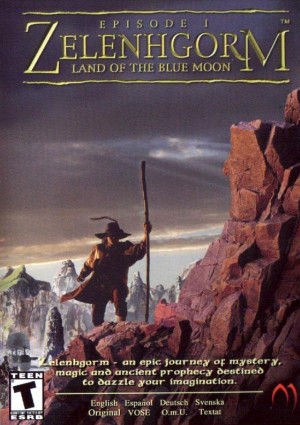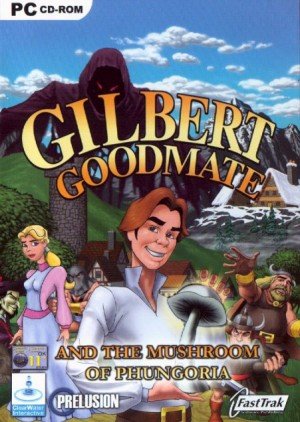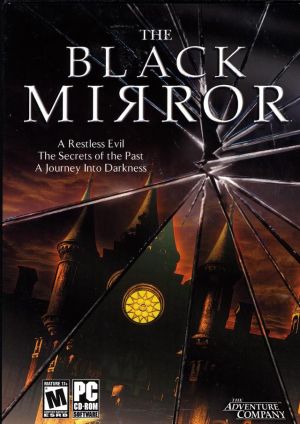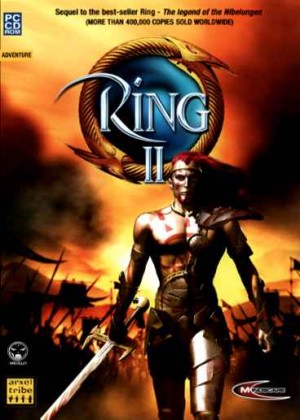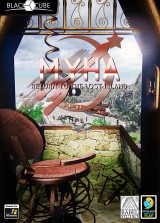Review for Ankh: Heart of Osiris
Everybody think green: reduce, reuse, and recycle.
No no, I'm not campaigning for greater environmental awareness, but highlighting a new and perhaps unavoidable trend in adventure game development. Instead of plastics, cardboard, and glass, it's all about art, assets, and technology. The more existing content and code that can be revisited from one game to the next, the faster and cheaper a new game's production cycle can be. And in an industry of spiralling costs, budget restraints become a very real obstacle, so anything that saves resources is a good thing for developers. But in a genre that's already so conventional in nature, is even more repetition good for the games?
While most noticeable in the growing number of episodic series, Ankh: Heart of Osiris is another game that has embraced the notion of recycled elements. Originally billed as an "expansion" to last year's Ankh, the new game is actually a full-fledged, standalone adventure with an all-new storyline, but it doesn't take long to realize how heavily it draws on the materials of the original. It's not unusual for a sequel to share similarities with its predecessor, of course, but Heart of Osiris is so alike that it's virtually indistinguishable from Ankh, from graphics to characters to interface and more. In fact, since the first couple hours of gameplay take place on the identical streets of Cairo (albeit now in an attractive twilight), if you didn't know any better you'd think you were still playing the first game. Fortunately, the same lighthearted nature and whimsical charm have also carried over, preserving the strengths of the last game and ensuring an equally enjoyable experience this time around. On the other hand, many of the same mistakes and weaknesses have returned unresolved as well, leaving the game feeling once again like a brief but entertaining romp that falls short of its own potential to join the comic adventure greats that so clearly inspired it.
Picking up a mere three weeks after the events of the first game, Heart of Osiris begins with a hungover and scraggly-bearded Assil awaking in a back alley with no sign of his treasured ankh. The first task, then, is to track down and reclaim the artifact before it falls into unscrupulous hands. (Here's a shocking plot hint: too late!) This time around, however, good old Osiris, Egyptian god of life and death, isn't content with just the ankh. With a winner-take-all Battle of the Gods on the horizon, Osiris must also be reunited with something he hasn't needed for a while: namely, his heart. And so, giving new meaning to the term "finding a pulse", the race is on to beat Osiris to the palpitating prize.
As in the first game, Assil needs plenty of help in order to succeed, even if he doesn't know he's getting it until late in the game. The beautiful but feisty Thara also returns as a playable heroine, possessing her own banana-throwing revolutionary reasons for getting involved once again. Meanwhile, one new addition to Heart of Osiris is the introduction of the Pharaoh as a third playable character. Still self-absorbed and clueless as ever, the Pharaoh finds himself a reluctant participant in the current events in order to protect his own power-grubbing interests. For the most part, each character progresses alone through their individual linear segments, oblivious to what the others are doing or how their efforts are connected. Only in the game's fifth and final chapter do their paths merge, and Assil and Thara must once again work (though not travel) together. At that point, you can freely switch between the characters, though you won't need to do so often, as the cooperative aspect is fairly understated this time around.
Apart from Osiris and the playable trio, there are plenty of other outrageous characters populating the game. Many are returnees, from the hopelessly-nearsighted tailor to the dancing security guard to the Rasta...umm...ferryman. Most of these characters are given fairly short shrift, being limited to small cameos that add very little other than some unnecessary continuity with the first game. Fortunately, a few new characters are introduced as the game progresses, offering a welcome breath of fresh air. Easily the most memorable addition is a desert bush with a tendency of overheating, if you all catch my mighty drift. Initially I cringed at the utter lack of religious sensitivity, but the whole sequence is so completely (and deliberately) over-the-top preposterous that you can't help but laugh at the absurdity.
For a comic adventure, laughing isn't something you'll do a whole lot of in Heart of Osiris, however. The game shares its predecessor's delightfully cheery tone and playful scenarios, but other than the occasional amusing lines and sight gags, once again there are surprisingly few outright laughs. On the plus side, the new game seems more comfortable with this limitation than Ankh did. It still tries a little too hard in places, but for the most part it seems content to be more "fun" than funny, not forcing the issue and failing awkwardly quite so often. And that's okay. It reminded me of daytime television cartoons in that way. I mean, a few notable exceptions aside, does anyone really laugh at those? Probably not often, but they're always good for a carefree diversion and a few goofy smiles, and this game offers the same.
Thinking of cartoons is easy to do while playing Heart of Osiris, as the bright, stylized 3D graphics make the game feel all the more like an animated TV feature. The high-resolution visuals aren't overly detailed and suffer from a case of the jags, but they're colourful and charming and set the stage beautifully for the game's enthusiastic atmosphere. They may not win any converts from the "2D forever!" diehards, but they more than hold their own. One of my deep-rooted fears for any new game that visits ancient Egypt for the umpteenth time is the monotony of a desert location. And while there's plenty of sand to be found in this game, particularly during a lengthy segment set in a quarry, fortunately there's enough scenic variety to keep things visually interesting, particularly when the game finally breaks free of its reliance on old locations. There are a few graphical quirks and flaws that should have been ironed out between games, such as animated interactions still magically completing themselves, but while the game could definitely have benefited from more polish, overall the experience is generally positive.
Accompanying the visual presentation is an impressive, low-key soundtrack. Wisely supplemented by long periods of silence, a variety of instrumental scores provide a soothing ethnic background that never overwhelms. Voicework is largely solid, with several of the actors returning from Ankh to reprise their roles, including Assil. The cast represents a strange mishmash of multicultural accents, but as this game offers no nods to realism, this discrepancy is really a non-issue. Remarkably, a few actors still haven't learned how to pronounce either "ankh" or "Assil" consistently, and you'd think after two games that proper voice direction would get it right. Then again, the unfortunate sound editing from the first game also hasn't been corrected, so once more the "background" conversations are so loud that they drown out the playable character dialogues at times, and if you cut into an ongoing discussion, they'll continue their own stilted and endlessly-repeating dialogue in between your interjections. Even that isn't as bad as the occasional lines with no sound recording at all, let alone those with visible subtitle placeholders as the only evidence that a dialogue line was ever planned. These oversights happened in the first game, and they happen again here, and while hardly an earth-shattering problem, it's incredibly sloppy, as are the many typos throughout.
The interface will offer no surprises to anyone who played Ankh, and aside from its reversal of left and right mouse buttons for "use" and "look", the third-person, point-and-click control scheme is completely intuitive. All the expected basics are well-represented, from the accessible inventory to double-click run speed to instant-exit icons. Like most 3D games, there are load screens occasionally as new locations are visited, but they're fairly short and cause no problems. Perhaps the only real hassle with the interface is during dialogues, as Heart of Osiris repeats its predecessor's annoying tendency to completely kick players out of a conversation once you've reached the end of a non-essential dialogue branch. Since the game actually offers so many options just for kicks, it's needlessly punishing to force players into starting conversations over from the beginning, particularly when there's often a verbal preamble that introduces each one. So expect to frequently pound your right mouse button to skip dialogue just to get back to where you wanted to leave off.
You'll be making plenty of use of your inventory throughout your journey, as gameplay in Heart of Osiris consists almost entirely of item collection and application. At one point I encountered a standalone calendar puzzle that seemed perfectly suited for a logic solution, but that proved to be merely a tease. Another puzzle involves a multi-part cooking recipe cleverly layered with clue deciphering, though this is the point where the game's translation from its original German is most apparent, making the solution more difficult than it should have been. For the most part, however, puzzle solutions are fairly straightforward. That's not to say they're altogether easy, mind you, and certainly not always intuitive. Like most comic adventures, this game includes a generous helping of bizarre item combinations, and you'll undoubtedly resort to random guessing at times. Fortunately, the inventory is cleared out as needed, so the tasks are generally manageable with a little thought and a lot of experimenting. Only once did I feel that a puzzle played dirty (if you discount the ones involving camel and bat poo), and that's because the "clue" is completely misleading. It was by sheer accident that I solved that one, and thank goodness, or else I might still be at it, cursing my inability to read German walkthroughs.
Despite its reliance on inventory, Heart of Osiris does bring a few interesting puzzle elements to the table. The most obvious is the inclusion of a cardboard codewheel that is required for one of the game's puzzles. Longtime adventure gamers will surely remember the days of codewheels, and while its value as a copy protection is probably marginal in the Internet age, it's still a fun extra. Unfortunately, it's tied to a buggy in-game puzzle where both the dialogue sequence is incorrect and items pop onscreen out of thin air. Ouch. Nevertheless, the codewheel is effective in concept, if not in execution. Elsewhere in the game, an intertwined series of puzzles revolve around the attitude of the nearby non-player characters towards you. You'll need to earn their favour before you can proceed, but what pleases one may displease another, so even after solving the individual puzzles for each, you'll still need to juggle your available options to succeed. To help gauge your progress, a smiley icon hovers over each person's head reflecting three different moods. It looks rather silly and it's completely artificial, but it does let you keep track of your status at a glance, so it's a useful tradeoff.
With so many ties to the original game, the obvious question for some is whether you'll need to have played the first to appreciate the second. And indeed, while it's entirely possible to jump straight into Heart of Osiris with no existing knowledge, the game does significantly reward those already familiar with the events of Ankh, so if you're considering one, start with the first. Doing so will serve the dual purpose of familiarizing yourself with the now-ongoing world of Assil and the gang, and determining whether it's worth it to you to continue. For those who like the original game, Heart of Osiris is a no-brainer, and for those who don't, there's nothing here to change your mind.
If you've yet to play either, both Ankh and Heart of Osiris can best be described as satisfying but rarely inspired. Identical almost to a fault, the new game once again offers up a solid experience for the 8-10 hours or so you'll spend playing, likely meeting reasonable expectations but never really exceeding them. For traditional comic adventure fans, it's familiar, it's comfortable, and it's carefree escapism, though it's neither funny nor imaginative enough to remember for long when you're done. Nevertheless, with the promise of Ankh 3 already on the horizon, it's a series I'm pleased to see continued, as there's always room for games that can put a smiley over your head.


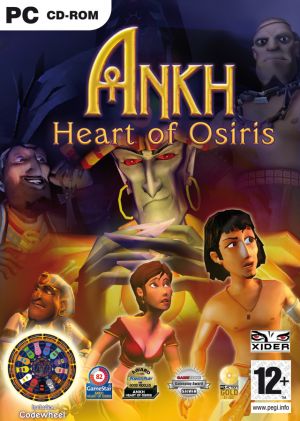
_capsule_fog__medium.png)





